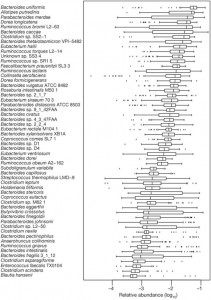One of my favorite writers is Elizabeth Scalia, “The Anchoress,” now a blogger for First Things. She has long suffered from a condition diagnosed as lupus, an autoimmune disease, but now after many years has been discovered to have Lyme disease. Lyme is a treatable infectious condition. Elizabeth writes:
A too-long-undiagnosed bout with Lyme Disease has left me challenged with arthritis and some neurological damage. The arthritis has its uses: I can predict rain, and the pain gives me something to offer up in prayer, or as penance.
Not so the neurological issues. At the peak of my illness I was unable to figure out how to do the dishes; my organizational skills have never fully recovered, and verbally I sometimes wander into strange lands, referring to cereal as cookies, or to hats as helmets.
Regular readers of this blog will know that I am not surprised that an “autoimmune” disease has turned out to be an infectious disease. Autoimmunity (where it genuinely exists – chronic infections are often misdiagnosed as autoimmune conditions even where no autoimmunity is present) seems to be mainly a side effect of chronic infections – collateral damage in a guerilla war with pathogens that conceal themselves behind human “cellular shields.”
Antibodies against the thyroid and gut engendered by gluten disappear within six months after cessation of wheat eating. [1, 2] I suspect that most autoantibodies engendered by pathogens will disappear on similar time scales once the underlying infection is cured.
I have previously written of my conviction that Alzheimer’s is an infectious disease. This conviction that grew out of my own experience: I had a 17-year chronic illness characterized by increasingly severe and embarrassing memory loss. At its worst I could not remember a friend with whom I had shared a small office for a year, and could not write (because I could not remember the previous paragraph when starting a new one, nor recall illustrative examples). The whole illness was cured by diet and antibiotics, and my memory is back to normal. I suspect that nearly all cases of Alzheimer’s can be cured by the same methods (the most important of which can be found here).
Elizabeth writes of the effect these diseases can have on a marriage:
CBS News correspondent Barry Petersen recently filed a report on the early-onset Alzheimer’s that began affecting his wife, Jan Chorlton, at the age of forty. It is an undeniably moving story; after introducing the viewer to images of the beautiful and lively Chorlton, the report shows us Petersen’s sixty-year old, still-beautiful wife, now living in what appears to be a top-notch assisted-living facility. She is unable to sustain simple conversation or to recognize her husband. Chorlton talks of a man she will always love, while Petersen openly weeps. When he asks his wife if she can name that man, she giggles, “Mr. Happy.”
Medical experts are introduced and they declare that there is no treatment for Alzheimer’s Disease, and no way to prevent it. In the near-future, we are told, sixteen million Americans will be diagnosed with Alzheimer’s Disease.
Petersen reveals that he is now in a relationship with a widow; they live together, and they both love Jan in what one of them calls “this very peculiar new American family.” The piece closes challenging anyone to gainsay them, who has not walked in their shoes.
But, was it not precisely for such situations that marriage vows were designed? “For better, for worse, for richer, for poorer, in sickness and in health, together or apart.” Love, which is limitless, is supposed to be strong enough – even if we do not think we are – to survive these challenges.
One of the saddest aspects of chronic illness is the damage it can do to marriages. A perusal of chronic disease message boards, like the one I followed at cpnhelp.org, can easily turn up tales of disease sufferers abandoned by their spouses.
It terrifies me to consider where I would be had I not had the persistent support of a loving wife. It is hard to believe I could have recovered without her.
Our motive for writing The Perfect Health Diet is to help people regain and maintain good health – to create healthy centenarians. But perhaps one side effect will be to save a few marriages – to encourage “Mr Happy” to be “Mr Persistent-In-Love.”
Caring for a chronically ill spouse is a labor of love. The laborer deserves his wage, and love deserves its reward. If there is one bit of advice that is more important than any other, in marriage and in disease, it is this: Don’t give up! Don’t ever give up!
References
[1] Berti I et al. Usefulness of screening program for celiac disease in autoimmune thyroiditis. Dig Dis Sci. 2000 Feb;45(2):403-6. http://pmid.us/10711459.
[2] Mainardi E et al. Thyroid-related autoantibodies and celiac disease: a role for a gluten-free diet? J Clin Gastroenterol. 2002 Sep;35(3):245-8. http://pmid.us/12192201.












Recent Comments